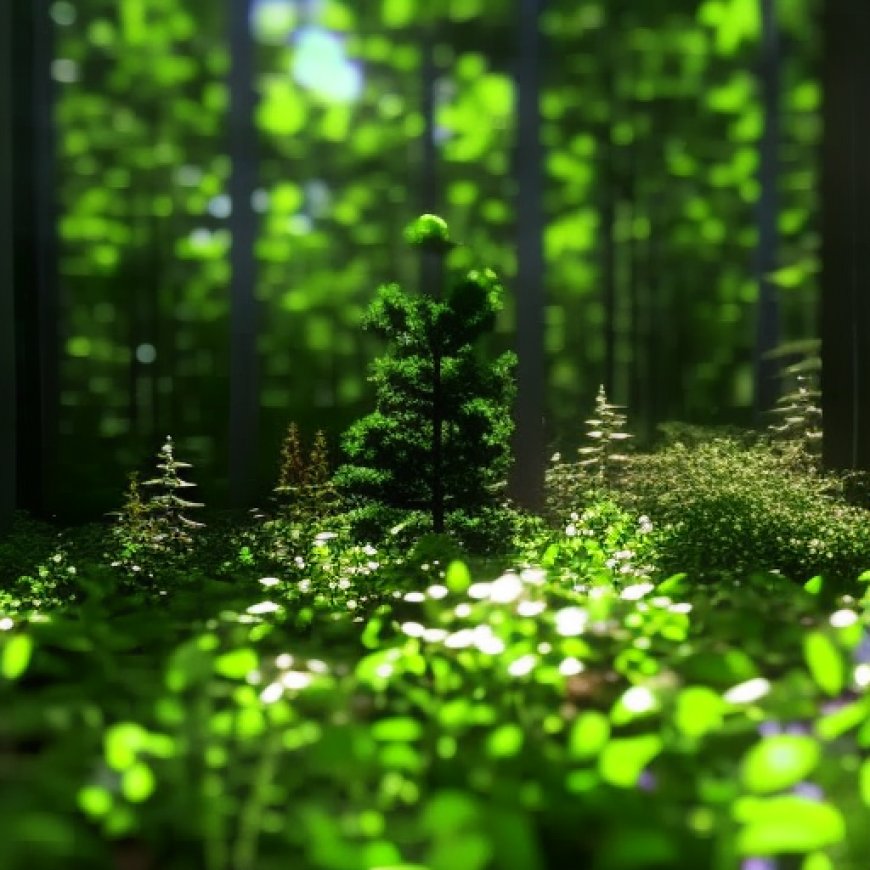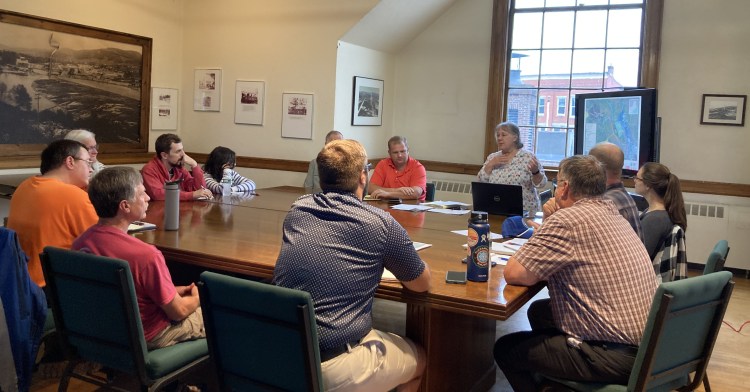Rumford residents offer suggestions for proposed community forest
Rumford residents offer suggestions for proposed community forest Lewiston Sun Journal


Proposed Rumford Community Forest: A Vision for Sustainable Development

Julie Renaud Evans, program director of the Northern Forest Center, leads a discussion Wednesday on casting a vision and mission statement for a proposed Rumford Community Forest at the Rumford Falls auditorium. In May, Inland Woods + Trails, a nonprofit based in Bethel, announced plans to create a 446-acre forest in town in partnership with The Trust for Public Land and the Northern Forest Center. Marianne Hutchinson/Rumford Falls Times
Introduction
RUMFORD — Julie Renaud Evans, program director of the Northern Forest Center, asked more than 20 community participants, including some Planning Board members, Wednesday for wording for a vision and mission statement on a proposed 446-acre community forest in Rumford.
The Sustainable Development Goals (SDGs)
In May, Inland Woods + Trails, a nonprofit organization based in Bethel, announced plans to establish a community forest in partnership with the The Trust for Public Land and the Northern Forest Center. This project aligns with several of the Sustainable Development Goals (SDGs) set by the United Nations, including Goal 15: Life on Land, Goal 11: Sustainable Cities and Communities, and Goal 8: Decent Work and Economic Growth.
Project Details
The project incorporates land between Black Mountain of Maine ski area and downtown Rumford, off Isthmus Road, increasing outdoor recreational opportunities while maintaining trails used by snowmobiles and ATVs. Inland Woods + Trails would be the owner and manager of the forest. The organization maintains 85 miles of trails in five towns throughout Oxford County, including for hiking, mountain biking, fat biking, cross-country skiing, snowshoeing and snowmobiling.
The Benefits of the Community Forest
Evans spoke of the benefits of planning and developing the community forest, saying, “You’ll see social benefits in terms of this planning process, (and benefits in) education and recreation … and then perhaps economic benefits as well.” This project aims to improve the quality of life for residents, provide educational opportunities, and boost the local economy.
Casting a Vision for the Future
She said in creating a vision statement, they should think about how they want to use the land and keep in mind “a sort of a futuristic vision,” possibly of what they would want people in a hundred years to be thankful for about their community forest. This long-term perspective aligns with Goal 13: Climate Action and Goal 14: Life Below Water, as it emphasizes the importance of sustainable land use and conservation.
Community Input
George O’Keefe, Rumford economic development director, said the most important thing in the wording are having the area’s “authentic voice,” and sounding like “something that someone else from Rumford would say.” The community’s input is crucial in ensuring that the vision and mission statement accurately reflect the values and aspirations of the local residents.
Another person said having some “old (tree) growth established is important” since the town has little old growth. “Having that in itself could attract people. If you want recreation in that place, people will go to a place where old growth is to see it and have recreation,” he said. This suggestion aligns with Goal 15: Life on Land, which emphasizes the importance of preserving biodiversity and natural habitats.
O’Keefe said it was “significant” that several people also stated their “desire for very well-preserved old growth stands of trees. Really the whole spectrum of this entire group would like to see a forest that becomes mature and stable and stays that way forever. That’s a unique thing.” This desire for long-term preservation aligns with Goal 12: Responsible Consumption and Production, as it promotes sustainable management of forests and ecosystems.
Next Steps
The next Rumford Community Forest planning meeting is at 6 p.m. Sept. 20 at the Town Hall auditorium and is open to the public. This meeting will provide an opportunity for further community engagement and input, ensuring that the vision and mission statement accurately represent the aspirations of the local residents.
SDGs, Targets, and Indicators
1. Which SDGs are addressed or connected to the issues highlighted in the article?
- SDG 15: Life on Land
- SDG 11: Sustainable Cities and Communities
2. What specific targets under those SDGs can be identified based on the article’s content?
- SDG 15.1: By 2030, ensure the conservation, restoration, and sustainable use of terrestrial and inland freshwater ecosystems and their services, in particular forests, wetlands, mountains, and drylands, in line with obligations under international agreements.
- SDG 11.4: Strengthen efforts to protect and safeguard the world’s cultural and natural heritage.
3. Are there any indicators mentioned or implied in the article that can be used to measure progress towards the identified targets?
- Indicator for SDG 15.1: Proportion of important sites for terrestrial and freshwater biodiversity that are covered by protected areas, by ecosystem type.
- Indicator for SDG 11.4: Number of countries that have implemented legal, policy, and institutional frameworks to protect and safeguard cultural and natural heritage.
4. Table: SDGs, Targets, and Indicators
| SDGs | Targets | Indicators |
|---|---|---|
| SDG 15: Life on Land | 15.1: By 2030, ensure the conservation, restoration, and sustainable use of terrestrial and inland freshwater ecosystems and their services, in particular forests, wetlands, mountains, and drylands, in line with obligations under international agreements. | Proportion of important sites for terrestrial and freshwater biodiversity that are covered by protected areas, by ecosystem type. |
| SDG 11: Sustainable Cities and Communities | 11.4: Strengthen efforts to protect and safeguard the world’s cultural and natural heritage. | Number of countries that have implemented legal, policy, and institutional frameworks to protect and safeguard cultural and natural heritage. |
Behold! This splendid article springs forth from the wellspring of knowledge, shaped by a wondrous proprietary AI technology that delved into a vast ocean of data, illuminating the path towards the Sustainable Development Goals. Remember that all rights are reserved by SDG Investors LLC, empowering us to champion progress together.
Source: sunjournal.com

Join us, as fellow seekers of change, on a transformative journey at https://sdgtalks.ai/welcome, where you can become a member and actively contribute to shaping a brighter future.







